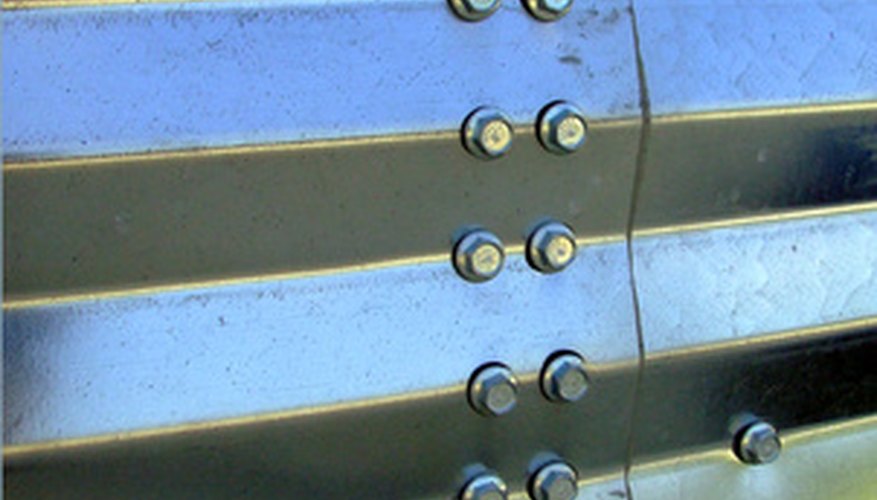Galvanised steel, which is treated with zinc to prevent rust, is useful for tools, equipment, structures, buildings and outdoor items. The material can also be hazardous to your health when you are cutting it, whether you are using a welding machine, drill, engraver or other cutting tools. You are most at risk of harm if you are not wearing protective gear or working in a well-ventilated area.
Explosions
Cutting galvanised steel that is part of sealed compartments in certain situations can be hazardous. These situations, which arise in mines or with farming equipment, often involve cutting through steel frames, walls or other compartments filled with metal scraps. People place the scraps inside the compartments for ballast to weigh down or stabilise equipment. The zinc in galvanised steel can react with moisture from the scrap metal, creating a highly flammable stream of hydrogen that shoots out when the outer layer of galvanised steel is cut. Prevent an explosion from such a reaction by treating such cutting as if high-pressure gas is inside the compartment when you start cutting. Use equipment specifically designed for drilling through high-pressure gas lines or, if possible, working remotely, using automated equipment. Use only dry-carbon scraps, rather than other types of metal scraps, in walls or compartments that you need to fill with ballast and install vent holes so the pressure does not build up inside the compartments.
- Cutting galvanised steel that is part of sealed compartments in certain situations can be hazardous.
- Use only dry-carbon scraps, rather than other types of metal scraps, in walls or compartments that you need to fill with ballast and install vent holes so the pressure does not build up inside the compartments.
Metal fume fever
One danger of cutting galvanised steel is metal fume fever, a condition caused by the released zinc fumes. The condition usually only lasts a single day, with workers most susceptible after several days away from the work environment. Metal fume fever comes with a number of flu-like symptoms that include fever, weakness and fatigue, aches, nausea and chills. Coughing is another common side effect, often accompanied by a dry throat. Avoid metal fume fever by wearing protective gear that includes a mask or other protective face covering. Also, ensure your work area is well-ventilated or even outfitted with an exhaust system that sucks out detrimental fumes.
- One danger of cutting galvanised steel is metal fume fever, a condition caused by the released zinc fumes.
Other zinc side effects
Short of causing metal fume fever, zinc chloride released while cutting galvanised steel can produce a host of other side effects. The fumes and dust irritate the skin, eyes, lungs, mucous membranes and, if large quantities are inhaled in a short period of time, can be fatal. Inhaling the fumes can lead to difficulty breathing, chest pain and tightness. Zinc chloride dust on the skin often produces contact dermatitis, rashes or chemical burns. Use the same precautions to avoid other zinc side effects as you would for metal fume fever, with protective gear and a well-ventilated work area. Also, include protective gloves, long sleeves and goggles to stop the zinc dust or fumes from contacting your eyes and skin.
- Short of causing metal fume fever, zinc chloride released while cutting galvanised steel can produce a host of other side effects.
- The fumes and dust irritate the skin, eyes, lungs, mucous membranes and, if large quantities are inhaled in a short period of time, can be fatal.
